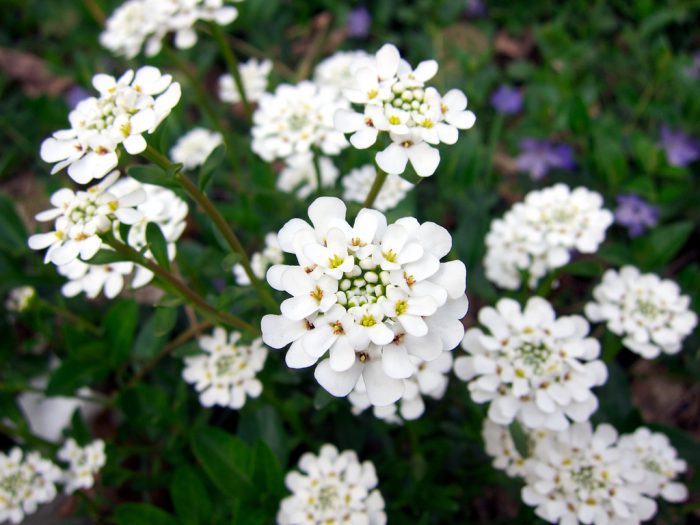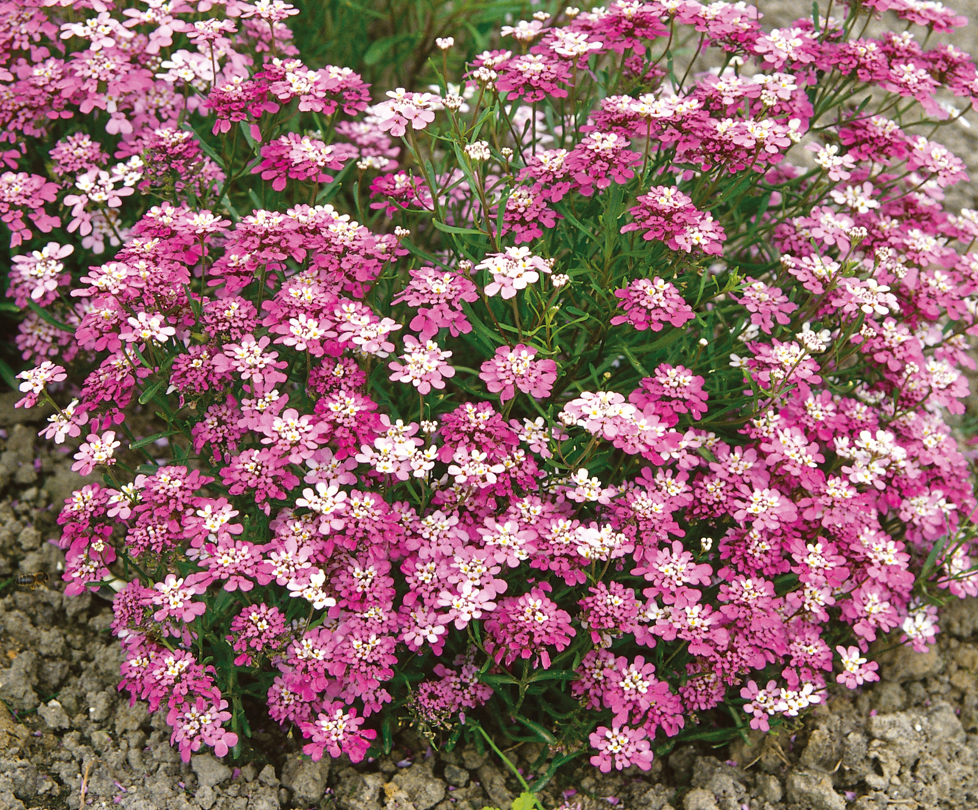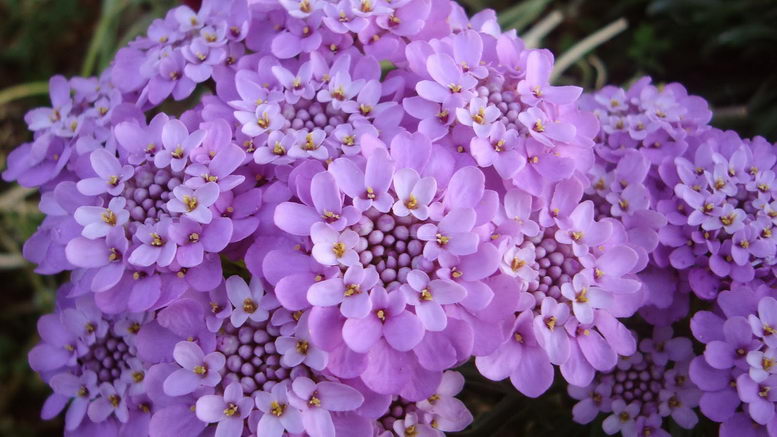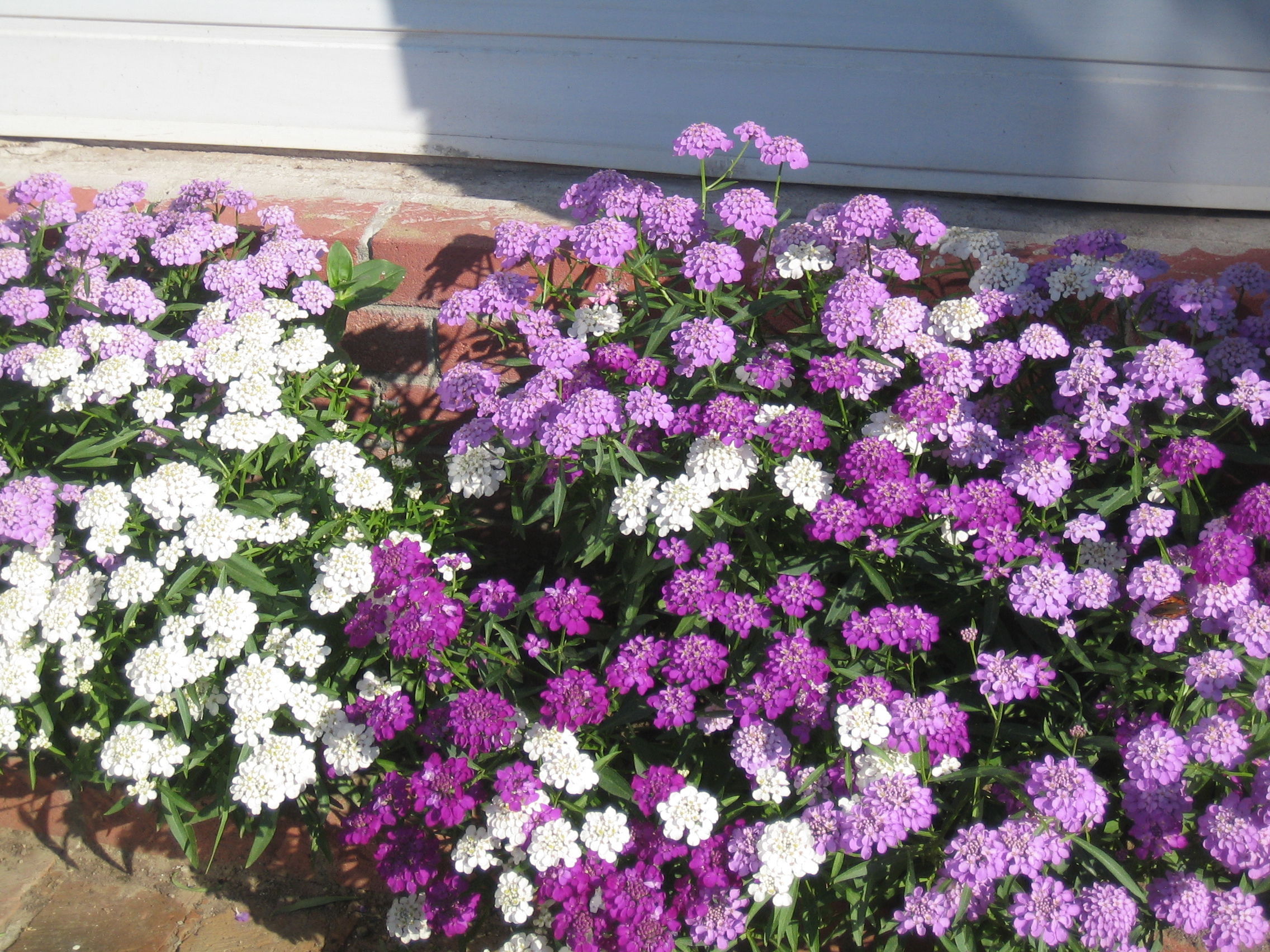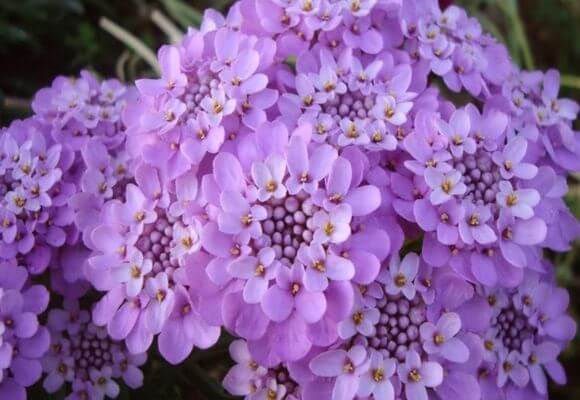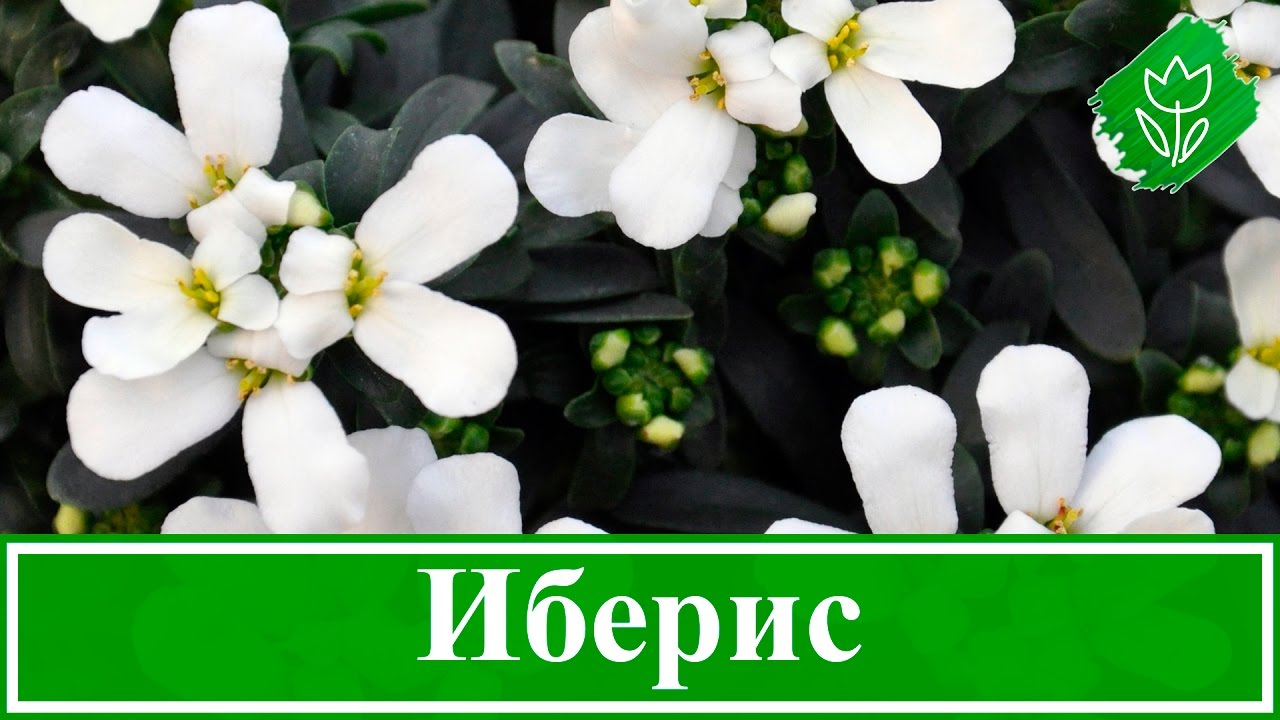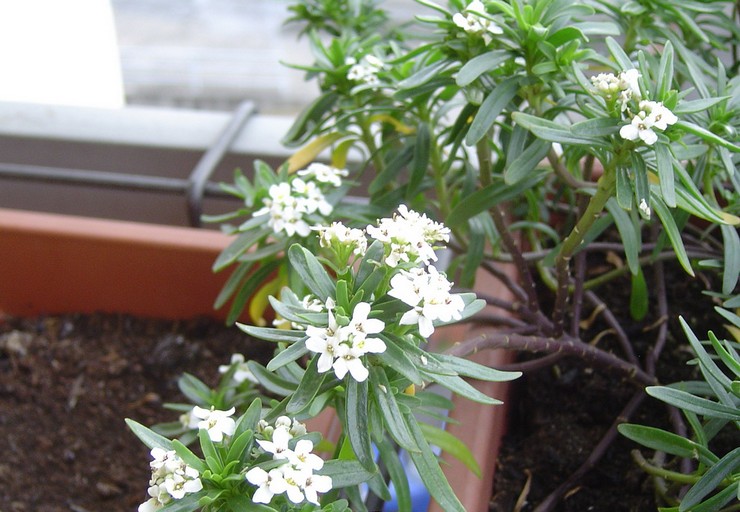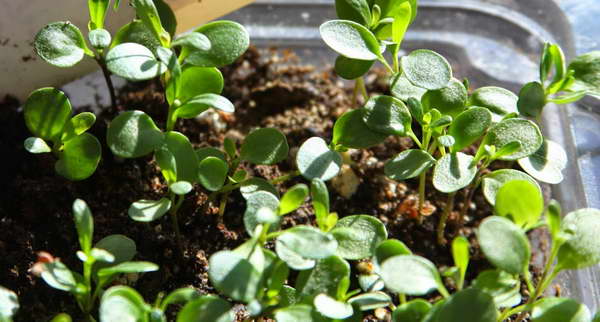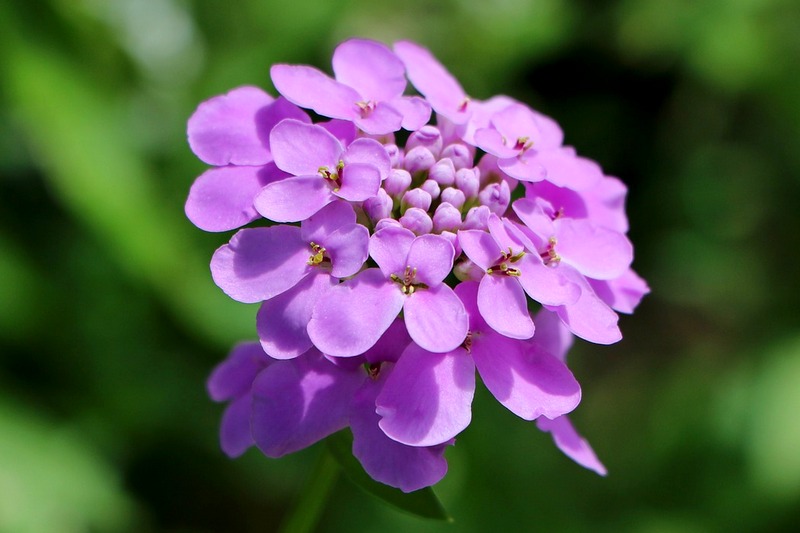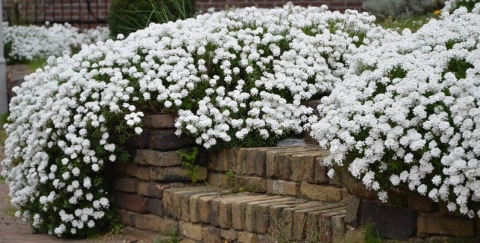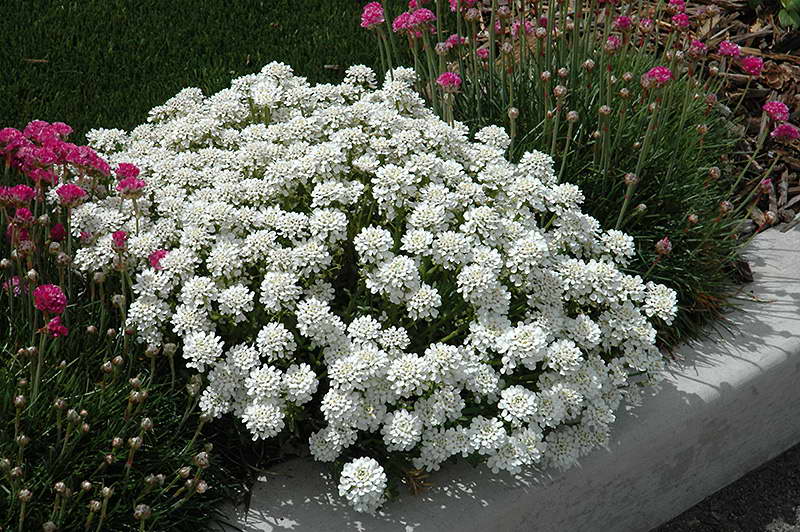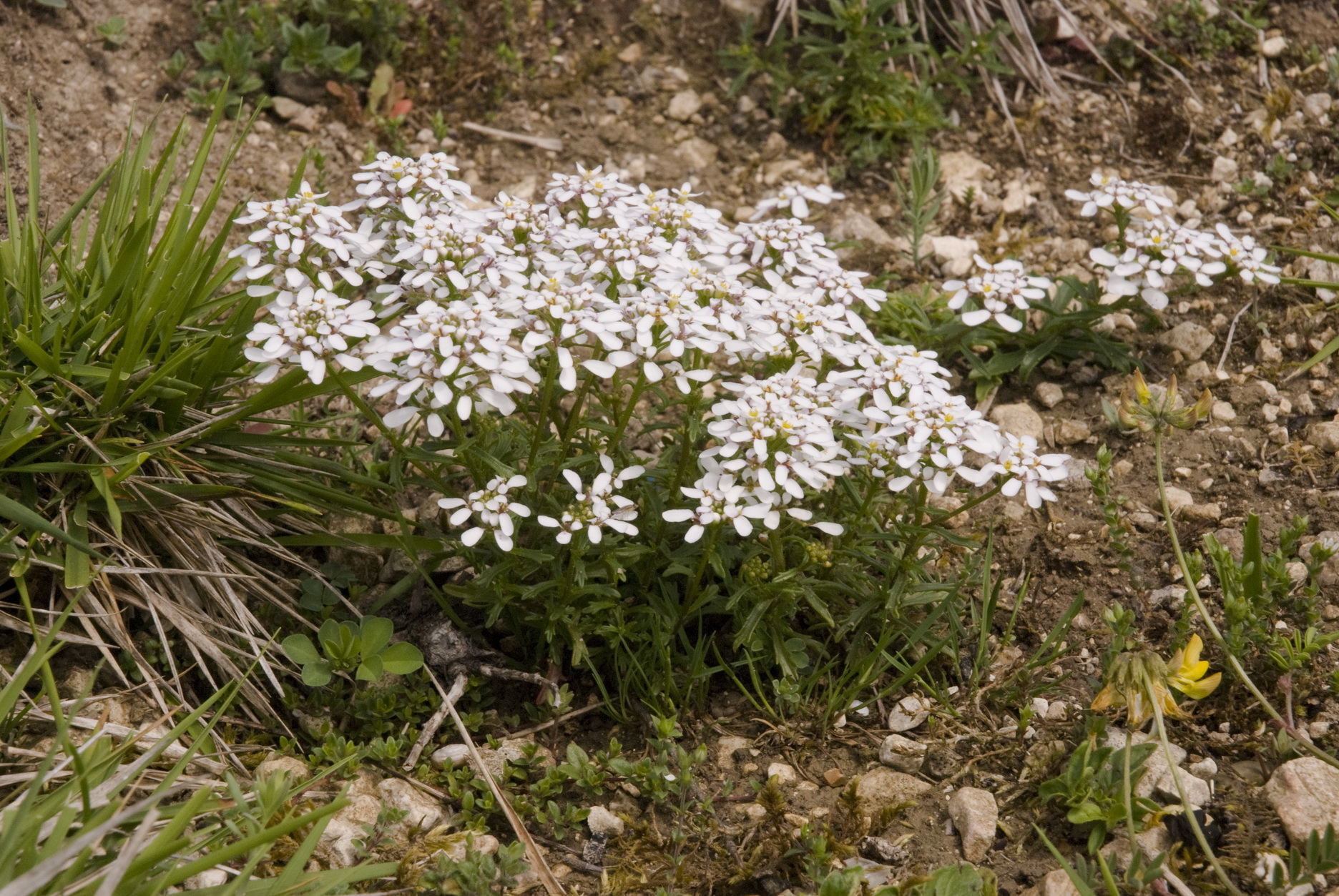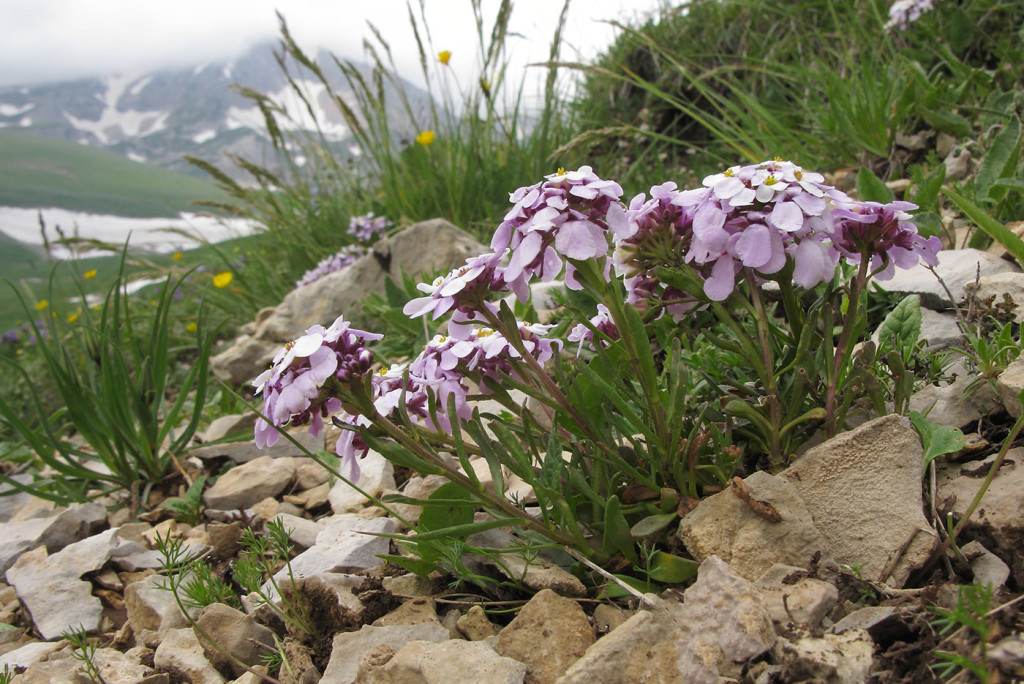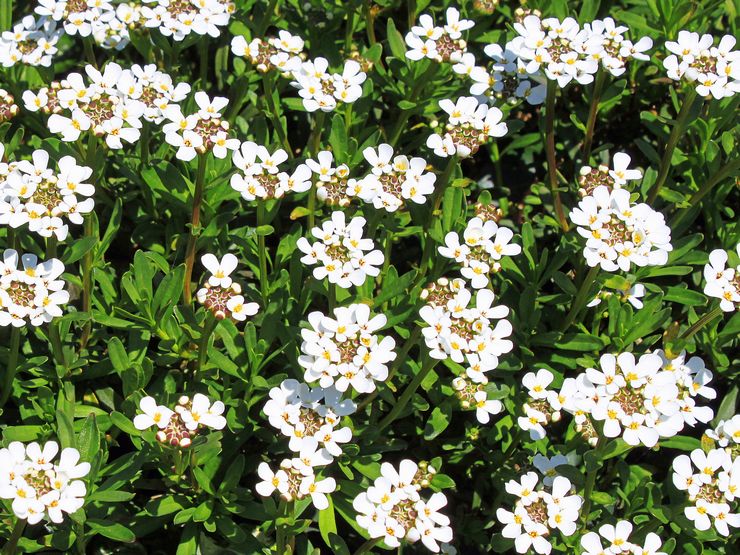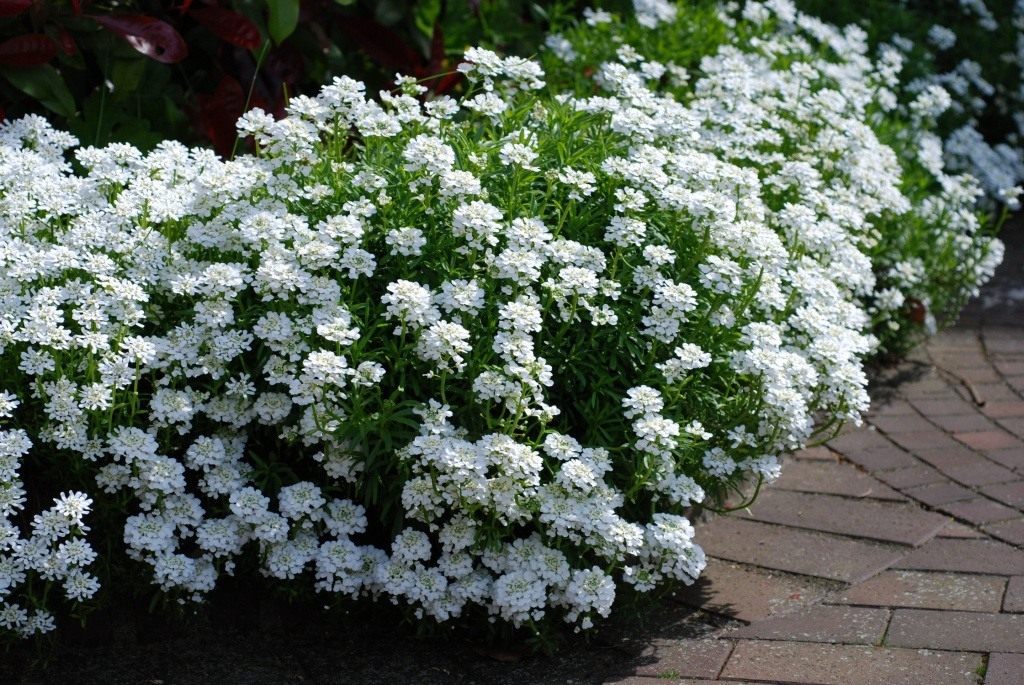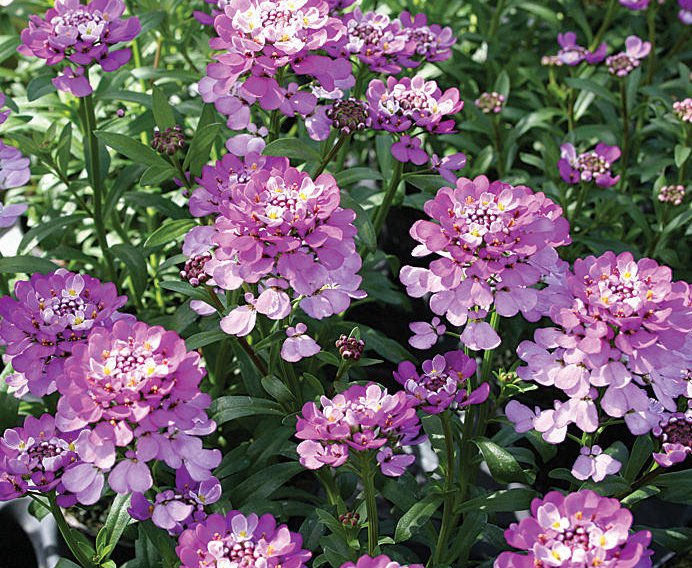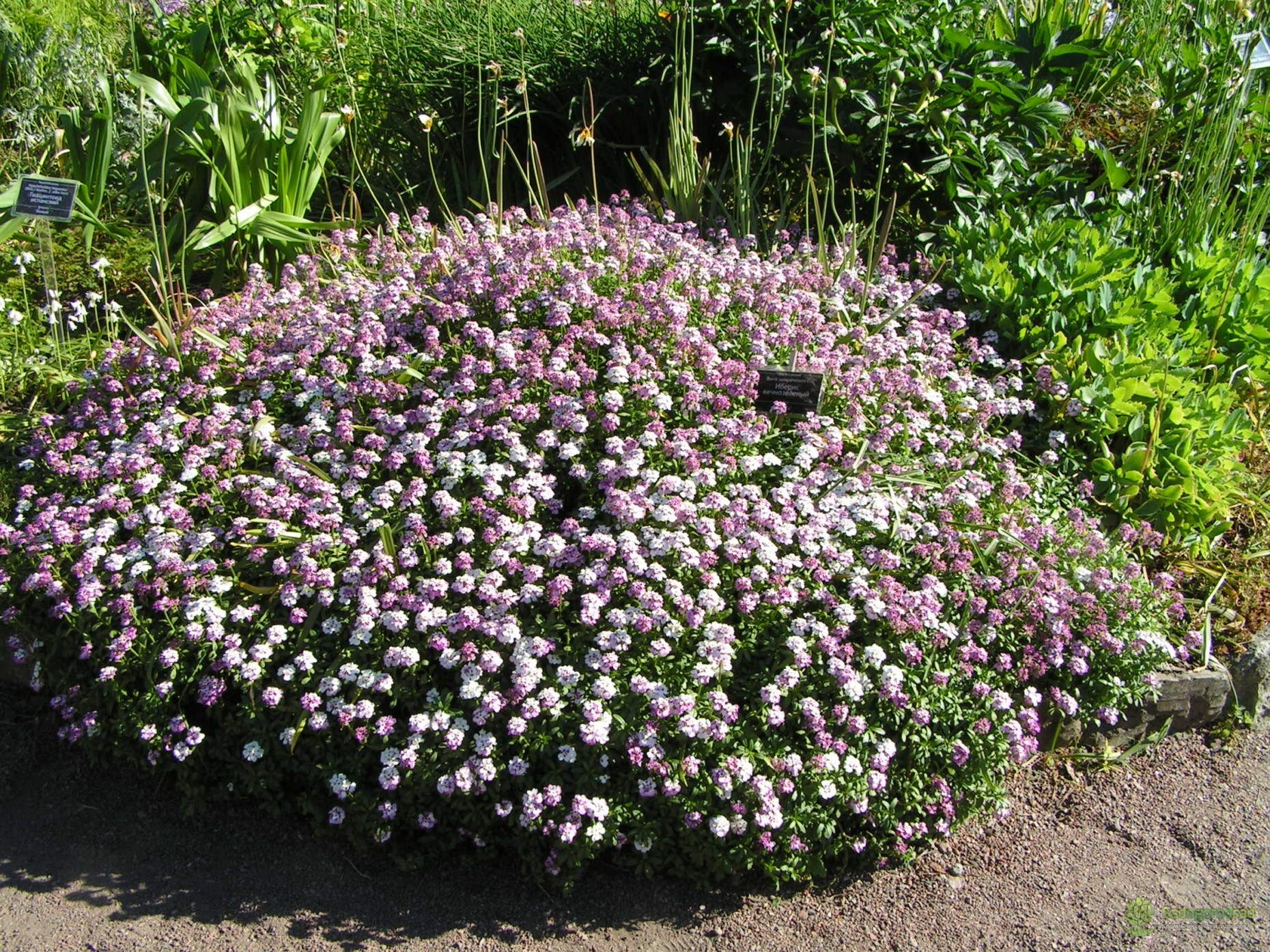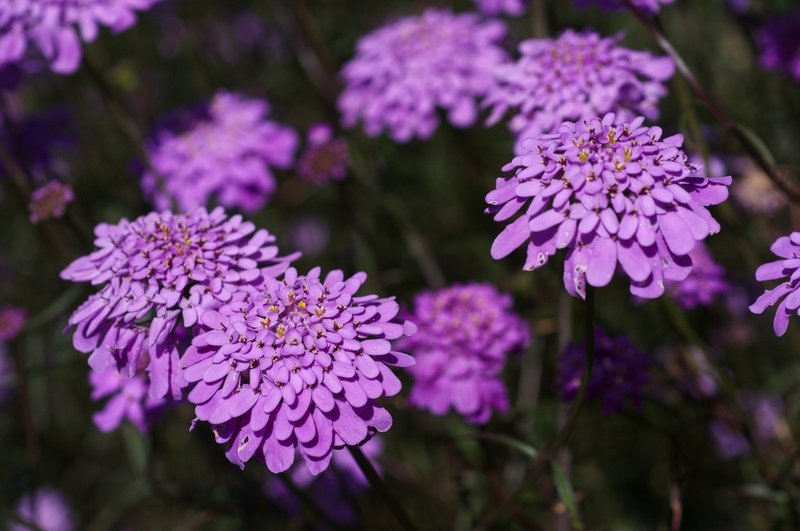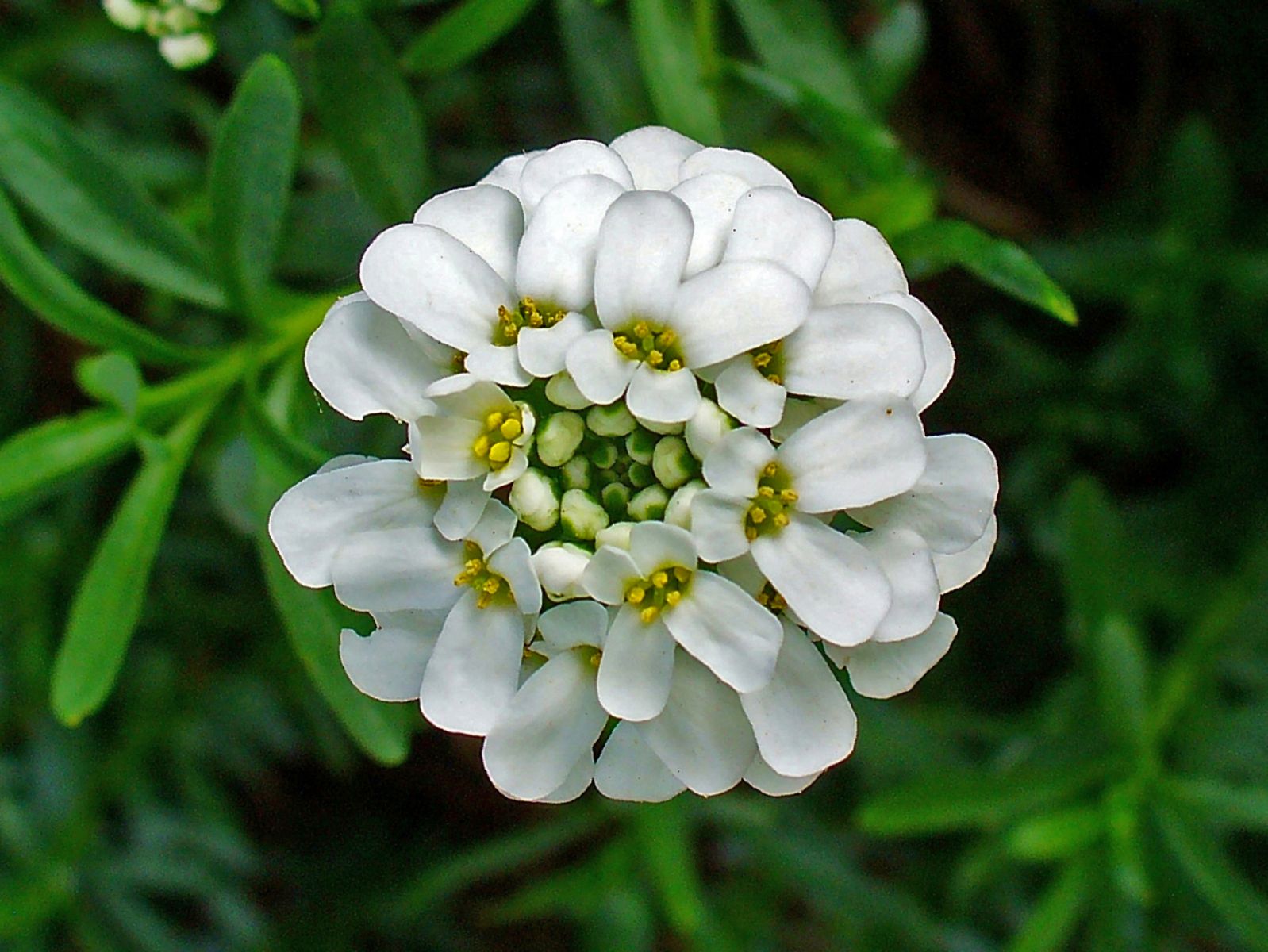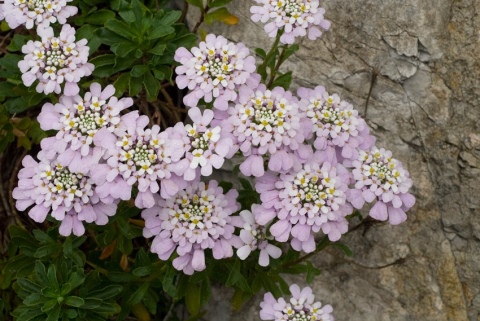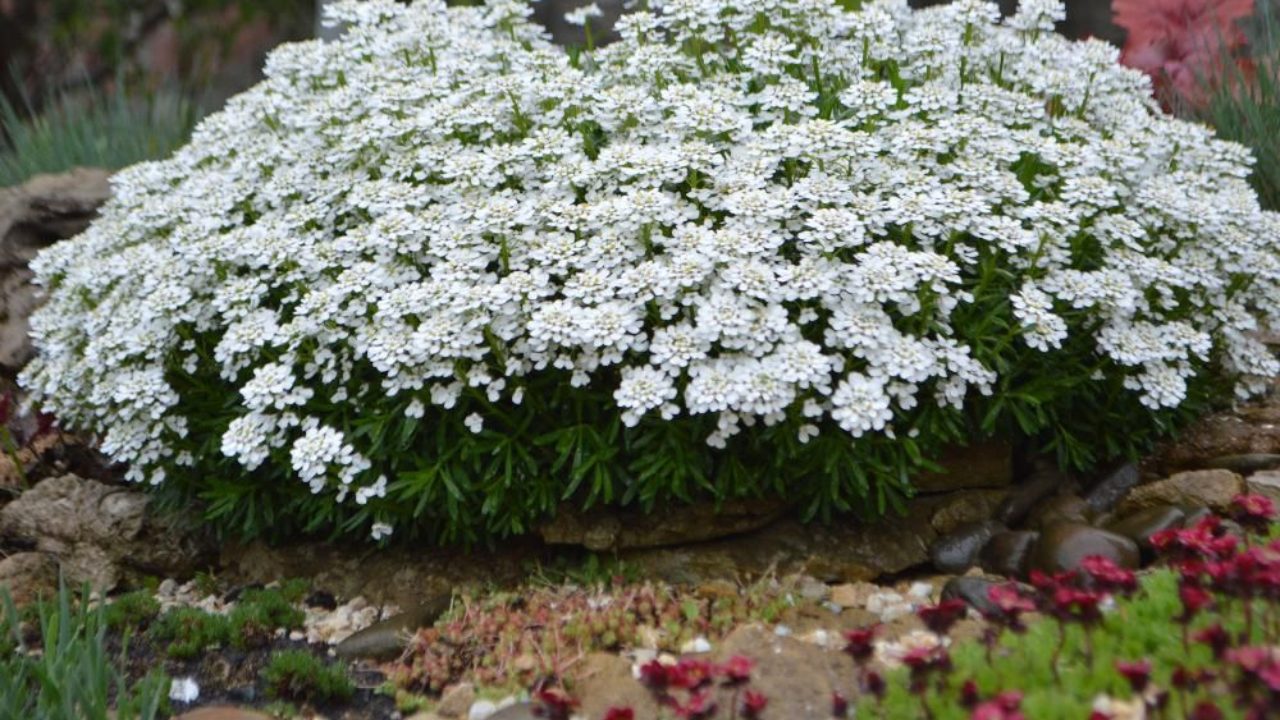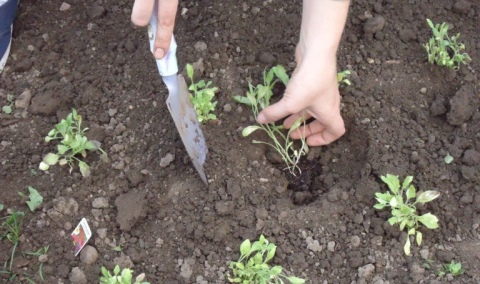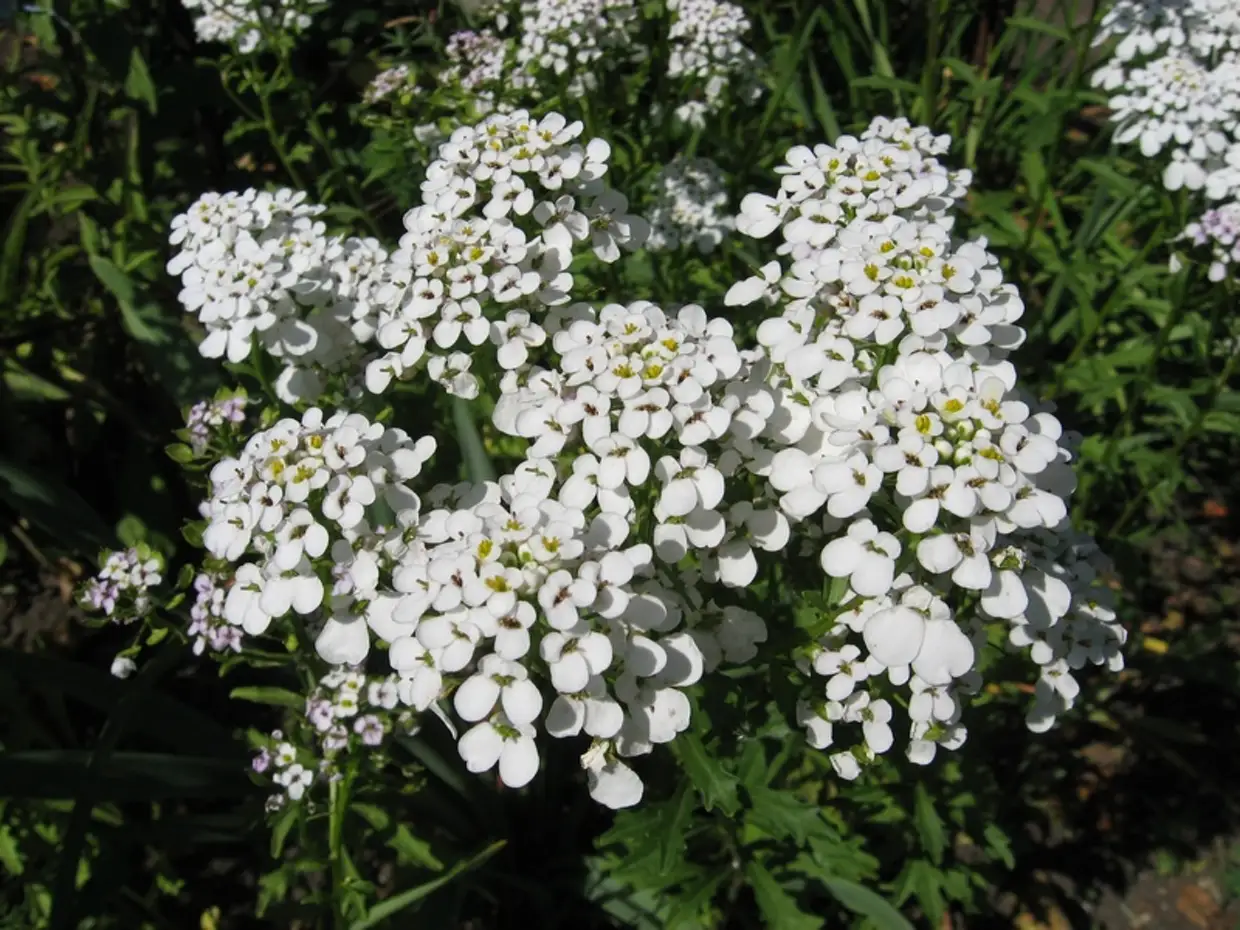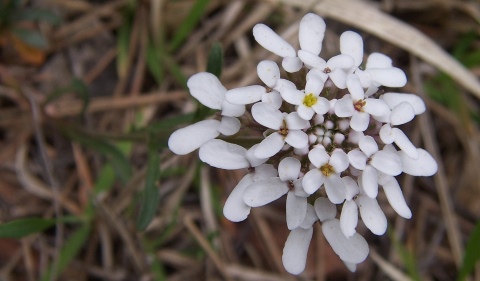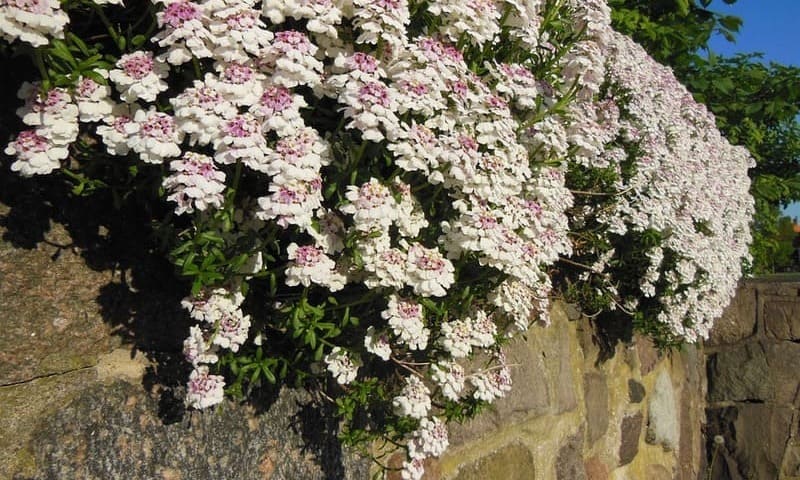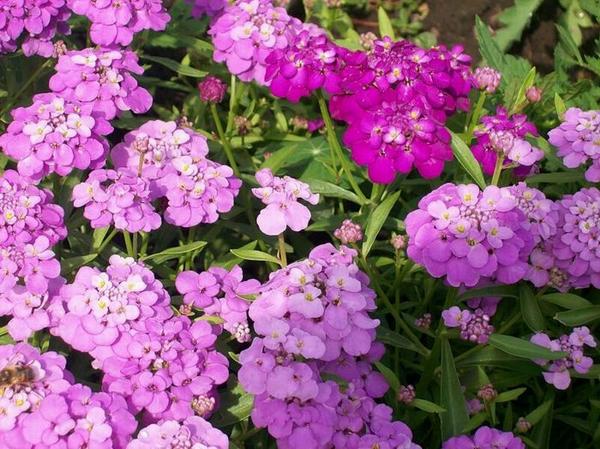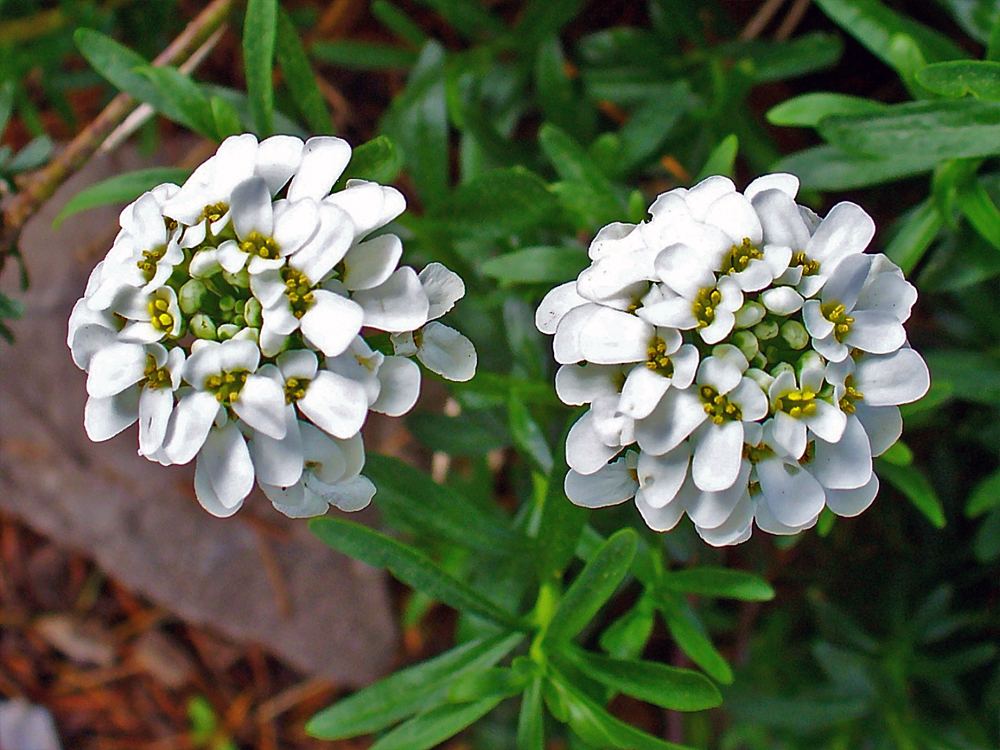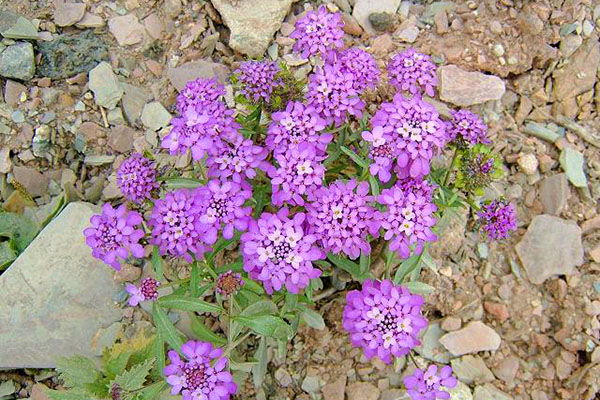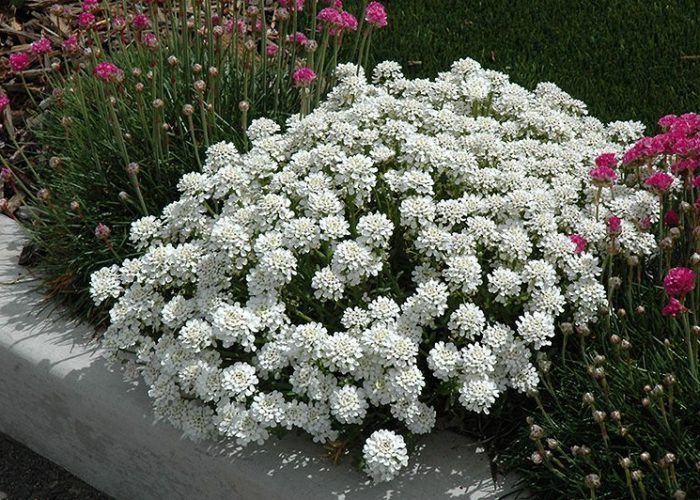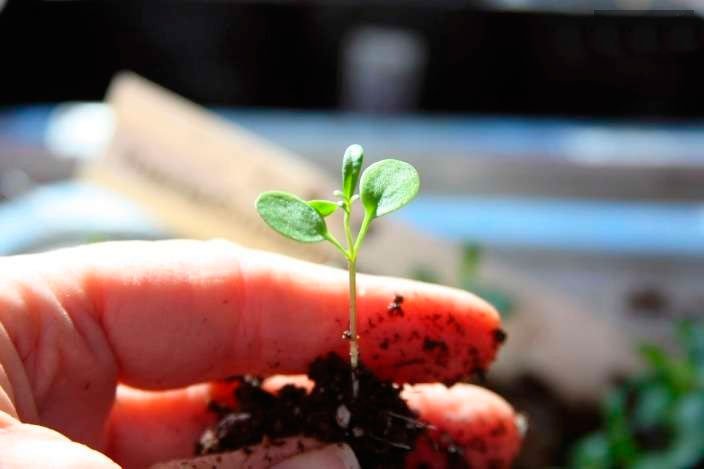Diseases and pests
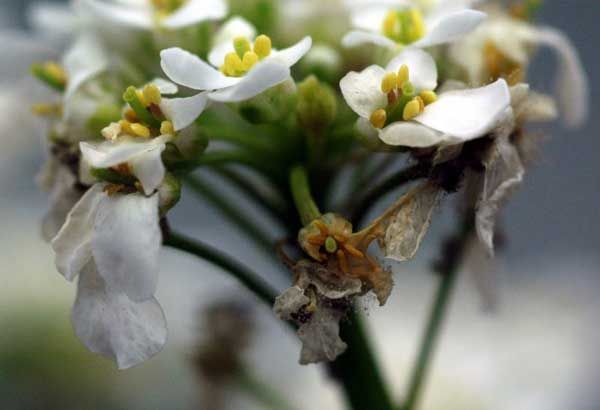
Iberis is considered to be quite a strong plant with good immunity to all sorts of pests and diseases. But if the plant is weakened, it can succumb to their negative effects.
For example, fungi can attack a flower. Keela cabbage is stimulated by a fungus. He is able to live in soil for up to 15 years. Peculiar tumors appear on the roots. They greatly retard growth or stop it altogether. It is very difficult to detect a disease when it starts. During the day, the leaves can become paler, even yellowish, wither. But they recover at night.
This disease cannot be cured
It is important to carry out the prevention of soil, planting material with the help of special substances. Young seedlings die with such a disease.
Adults can exist, but they look unhealthy, bloom inferiorly.
Rhizoctonia most often occurs during cold rainy weather. Gray spots with black dots appear on the stems near the roots and on the roots themselves. The plant begins to wilt first, and then dies. To combat this problem, fungicides are introduced into the soil, acidic soils require the addition of lime. All infected specimens must be destroyed.
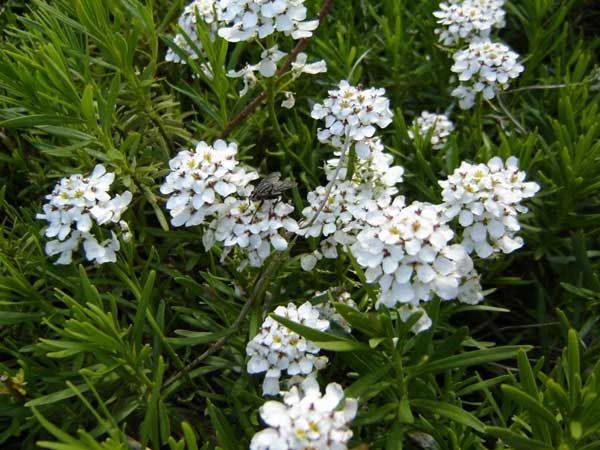
Insects also sometimes attack Iberis. For example, a hairy louse (mealybug) sucking an insect. It sucks out juices, releasing a sticky, unpleasant, cotton-like substance. This is honeydew. Sooty mushrooms grow on it over time.
If this happens, the plant completely loses its decorative effect and practically stops growing and developing. If the infection is not severe, then all insects must be removed, as well as honeydew. The plant is then sprayed with garlic infusion or tobacco. You can also use soapy water. Processing must be carried out three times. In case of severe damage, chemical agents are used. Processing is done 2-3 times every 1-2 weeks.
Another parasite that infects Iberis is the cabbage aphid. Insect colonies suck out the juice, and this kills the flower. First, the leaves are covered with light spots that turn brown. Leaves begin to curl, budding stops, as well as flowering.
Against cabbage aphids, the plant is sprayed with special chemicals or tobacco broth, soapy water.
The green part of the stencil can be destroyed by an earthen flea. Its presence is betrayed by large spots on the inside of the leaves. Loose lines also appear on the stems, the plant withers. The insect jumps over the plant and in the same way gets to the neighboring flowers. You can fight it with a decoction of tansy, insecticides. Moisturizing the soil near the Iberis also helps.
Care features
Growing perennial Iberis after planting it in the garden, and caring for the plants is not difficult. Water it only in drought so as not to create excess moisture on the root system.
Plants do not need feeding. If gardeners want to get lush flowering, they feed the Iberian with complex fertilizers 2 times in the summer, and remove wilted flowers in a timely manner.
After flowering, the stems are shortened by a third to give the bushes a neat appearance. The flowers of perennial Iberis, planted at least 5 years ago, with proper care, are transplanted to keep its flowers large and the bushes lush.
You may be interested in:
Perennial flowers for a flower bed, blooming all summer: undersized Along with annual flowers in a flower bed, summer residents always try to plant perennial flowers, and sometimes only ... Read more ...
Iberian shoots are planted directly in the ground, in a warm spring, when all frosts have passed. This is usually May. In the garden, a perennial Iberis for planting needs a lighted area, with a suitable soil, and then care will be simple. The soil is required loamy, sandy, rocky.
After successful flowering, pods with seeds grow in place of flowers. Due to the long flowering, the pods ripen constantly, they are harvested as they ripen. Then they are dried in the heat, and the seeds are husked. Store seeds in a cool, dry place.
Many gardeners leave the pods unharvested for self-seeding of the Iberian. With the first spring warmth, friendly shoots appear on the site of last year's plantings, they are thinned out, and planted in a new place.
The perennial hibernates easily even in severe frosts. But when planting perennial Iberis in the country, caring for it requires covering for the winter with spruce branches, the photo shows how the bush is pruned beforehand, what part of it remains above the ground.
Remember! Iberis is a frost-resistant plant, but when cultivated in central Russia, it requires winter shelter by mulching.
Popular varieties
Among annuals, only two species are in demand: Iberis amara (bitter), Iberis umbellata (umbrella). We will talk about them.
Umbrella view
The luxurious appearance of the annual is the main reason for its popularity among gardeners. Reaches 40 cm in height. Shoots are smooth, branched, the leaves are lanceolate. The flowers have an unsurpassed aroma, the color varies from white to purple. Within ten weeks, the first flowers appear. Umbrella Iberis has been cultivated since the 16th century. Two varieties deserve special attention:
- Red Flash. Reach 30 centimeters. The flowers are bright red.
- Fairy Mixture. Height does not exceed 25 cm. A successful mixture of pastel colors.

Iberis variety Fairy Mixture
Bitter look
A relatively short annual - only 30 sentiments. Flowers reach 2 cm in diameter, can be painted in exclusively white, slightly lilac color. The leaflets are inversely lanceolate, the edge is serrated.
 Iberis bitter
Iberis bitter
Among the common varieties are:
- Tom Tumb. Up to 15 centimeters, white flowers.
- Hyacintenblutige Riesen. 35 centimeters, lilac shade.
- Weiss Riesen. 30 centimeters, white flowers.
Perennials are successfully cultivated by gardeners. Let's consider them in more detail.
Iberis gibraltarica - gibraltar perennial
You can distinguish it from other varieties by its many small pink flowers. Iberis Gibraltarian is semi-evergreen, diameter 40 centimeters, height - 25 centimeters
Please note that Gibraltar Candytaft has purple flowers, but turns white over time

Gibraltar Iberis
Iberis simplex - Crimean Iberis
The bushes are very small, no more than ten centimeters. The leaves are spatulate. It is noteworthy that the buds are purple in color, but when opened, the flowers are always white.
Crimean Iberis
Iberis saxatilis - rocky Iberis
Reaches 15 centimeters. When blooming, a unique effect is created, as if the petals are covered with snow.

Rocky Iberis
Iberis sempervirens - evergreen Iberis
Perhaps the most popular perennial. Height 40 centimeters, leaves are elongated by 7 centimeters. They have a characteristic dark green color, the diameter of the inflorescence is 5 cm. It blooms for 3 weeks very luxuriantly and brightly, repeated flowering is possible. It first began to be cultivated in the 17th century.

Evergreen Iberis
Iberis evergreen has several varieties, among which are in great demand:
- Dana. 15 centimeters bush, abundant flowering.
- Findall. 20 centimeters high, very large in diameter.
- Miniature flock. Usually it can be seen on stony masonry, the height of the bushes is 15 centimeters.

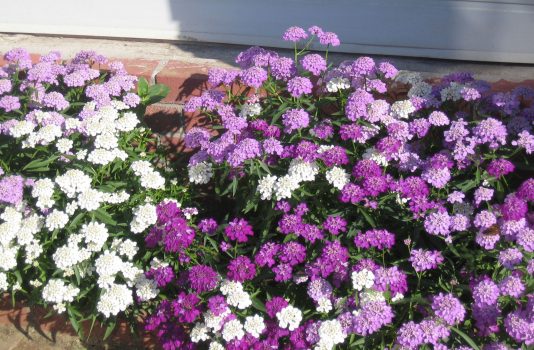
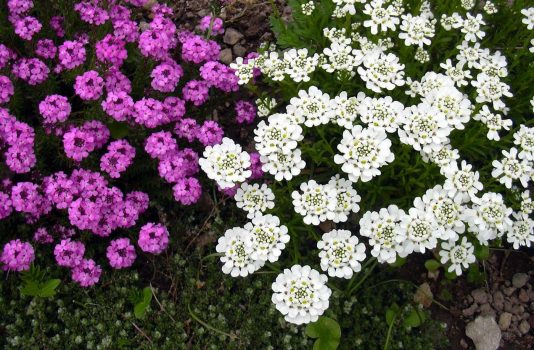
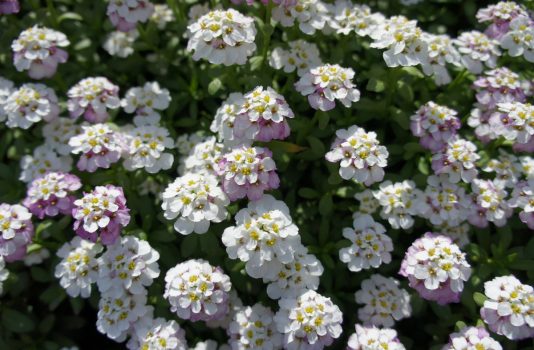
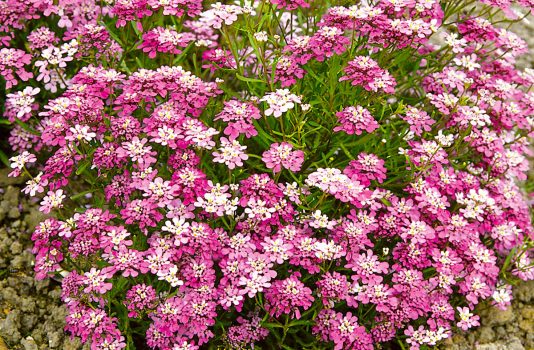

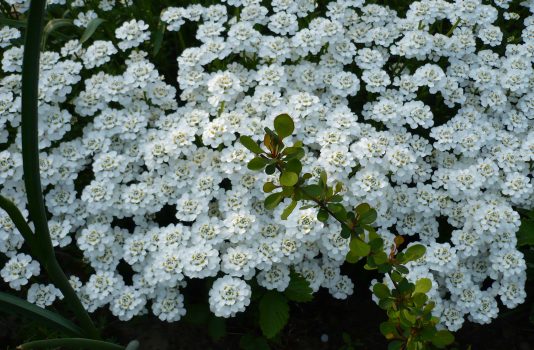
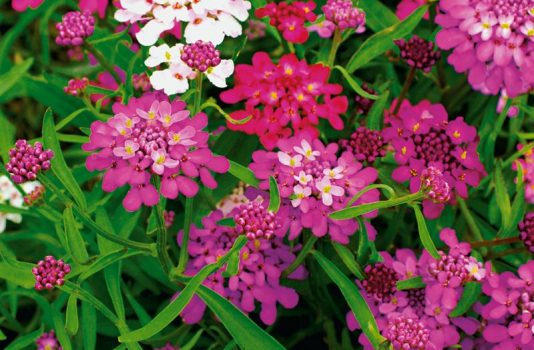
How to grow seedlings from seeds?
To get one hundred percent germination, you must have high-quality seed when planting.Some plant seeds directly in the beds, which they prepare in advance, but the greatest result can be achieved if you start propagating the Iberis with seedlings. More precisely, growing Iberis from seeds is the main method of plant propagation. The sooner you start sowing the seeds, the sooner you will get seedlings. Therefore, this process is usually started at the end of February or in the beginning of March. To begin with, the soil is placed in a common container. Since the seeds of Iberis are very small, it is advisable to sow them in this way.
Further, the seed material is simply scattered on the surface of the soil, and then lightly sprinkled with loose earth from above. In order not to harm future seedlings, the ground on the surface is moistened with a spray bottle. Better yet, cover the container with plastic wrap after watering.

It will take about 2 weeks, and seedlings will appear. Then the film is removed from the container, and after the appearance of the first pair of well-formed leaves, each seedling is dived and transplanted into a separate container (glass). Some amateur flower growers try to plant 2-3 seeds at once in separate cups, so as not to suffer later and not to transplant weak sprouts. By the way, the plants planted in this way will begin their flowering much earlier than those that will be subjected to multiple transplants.
Further, the seedlings must be hardened for 12 days, taking them outside in the shade for several hours. Then you can plant seedlings in open ground without fear. Best if it is late May or early June. To do this, prepare the holes, which should be on the light side and be at a distance of 18 cm from each other. When planting seedlings, try not to sprinkle the root collar too much. The soil must have good drainage properties. Sandy or rocky soil is preferable.
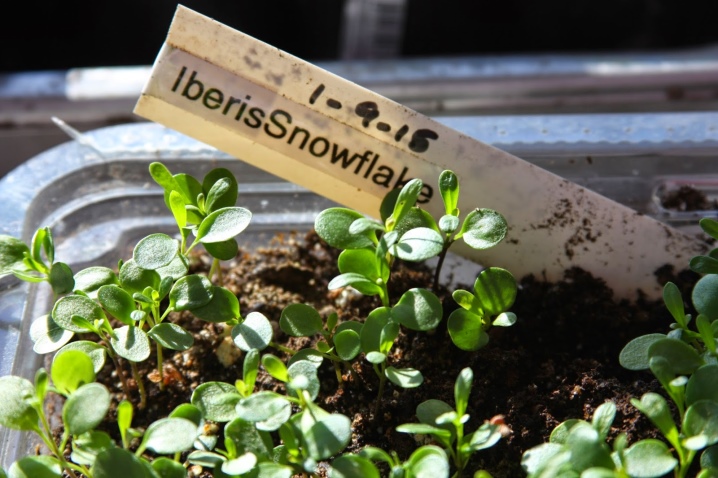
Landing in open ground
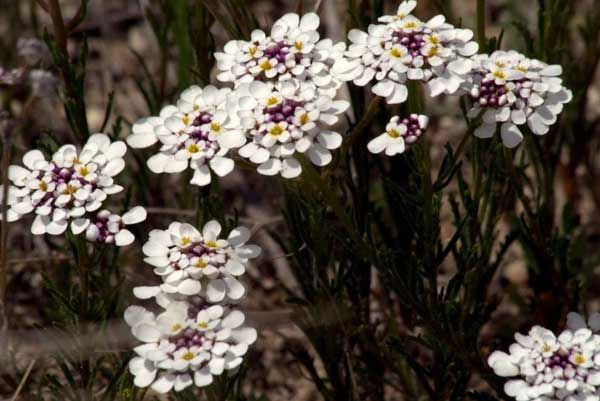
It is worth recalling right away that Iberis does not like transplantation. Therefore, it can be sown simply into the ground. The stencil is sown to a permanent place approximately in the middle of spring, deepening 1 cm into the ground. Seedlings will appear after 7-10 days. Then it remains only to thin out the Iberis a little, and it will be able to grow quietly, no one will disturb him.
If the region is too cold for such a cultivation, or you just prefer to grow seedlings earlier, then you need to plant flowers in a permanent place very carefully.
There are three main factors to pay attention to:
- The soil;
- Neighbors and partners of the flower;
- Lighting.
Iberis belongs to those crops that do not like to grow in places where a lot of moisture accumulates. It is best to choose areas with loamy or sandy soil. The main rule is good soil permeability.
As for partners, Iberis is quite calm about different neighbors. Large groups of different varieties of Iberis are often planted side by side. In this case, insects pollinate them. Next year, you can get new interesting varieties of plants with different shades.

Note! If you do not want to allow cross-pollination, then you need to increase the distance between the varieties of Iberis. And the last important point is lighting
Iberis should only be planted in well-lit areas where sunlight prevails throughout the day. Otherwise, the plant will die.
And the last important point is lighting. Iberis should only be planted in well-lit areas where sunlight prevails throughout the day. Otherwise, the plant will die.
When transplanting seedlings, you must carefully remove the plant so as not to damage the roots. The soil can be treated beforehand against fungal diseases.
Planting is carried out with an interval between plants of at least 15-20 cm. So each seedling will receive enough nutrition, the flowers will not interfere with each other.
Next, the stencil is watered, the ground around the seedlings needs to be compacted.Watering a second time can only be done after the plant has fully adapted to the new location.
It is worth noting that Iberis also perfectly tolerates winter sowing. If this option suits the gardener the most, then you can use this technique.
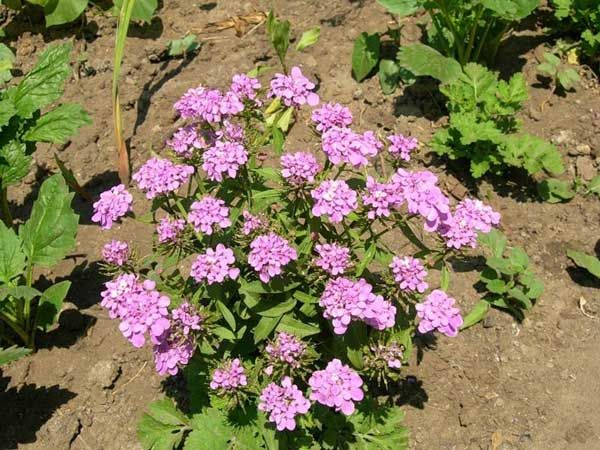
Caring for an Iberis, like planting it, is a fairly simple process and accessible to most people. Firstly, the plant does not require a special watering regime. Only on the driest days is it advisable to refresh the plant a little. All other time, Iberis does not need watering.
The same is the case with top dressing. There is no need for them. But if you wish, you can make the flowers pleasant. During the summer, you can add any complex fertilizer to the soil on the site with a flower 1-2 times. This will make the flowering more beautiful and abundant. Some gardeners recommend mulching the soil near the Iberis with compost. Alternatively, you can simply apply organic fertilizer in summer or spring.
The basis of caring for this crop is not watering or feeding. More time needs to be devoted to the formation of the plant. Firstly, in order not to spoil the beautiful look of the flower bed, you need to remove wilted flowers
It is important to do this in a timely manner. Secondly, when the plant blooms, you need to give it a beautiful shape.
For this, all stems are cut to about 1/3 of their length. Thus, a completely compact and neat bush will form. He will not ruin the flower bed, even if he no longer pleases with his beautiful fragrant flowers.
Perennial species of Iberis also require seating. When they reach about 5 years old, the flowers may become smaller in size, the decorative effect is lost. For this, the separation of the bushes and the seating are performed.
Iberis - decorating your garden: video
Planting and breeding
Iberis is most often grown from seed, although perennial species can be grown vegetatively. Seeds are sown directly into open ground or in advance for seedlings. Flowering usually begins 2-3 months after the end of germination. In open ground, seeds are sown in mid-April. In order to prolong flowering, gardeners use seeding in several stages with a repeatability of 3-4 weeks. In this case, early flowering plants will be replaced by later sowing.
You should choose an optimally lit, open place with fertile, loose soil.
The seeds are evenly distributed in shallow grooves and carefully sprinkled with soil. Water the soil if necessary
When seedlings are formed, they are thinned so that the gap between the plants is 12-15 centimeters.
Sowing seeds
You can grow this flower from seeds, as well as using a vegetative propagation method. Moreover, the most popular method of propagation is by seeds, since they are very easy to purchase in the supermarket or collect. Most species of this plant are sown directly into open soil in April.
For flowering to last even longer, sowing seeds should be done twice with a distance of 15–20 days. The first seedlings will appear in 7-14 days. Seedlings need to be thinned, the distance between the bushes should be from 12 to 15 centimeters. You can also use sowing before winter.
Seedling
Sowing seeds for seedlings should be done in the first days of the spring, while the land should be loose. It is necessary to deepen the seeds into the soil only 1 millimeter, sprinkle them on top with a thin layer of river sand. The container must be covered with glass, since the humidity of the air and substrate should always be moderate.
The container should be moved to a well-lit and warm area. It is necessary to water the crops only if necessary, and it is imperative to use a sprayer. It is not advisable to plant seedlings.
Landing in the ground
It is necessary to transplant the plant into open soil in the spring, when there is no longer a threat of severe cold. As a rule, this time falls in May.For planting Iberis, you need to choose a well-lit place that has loamy, sandy or rocky soil. It should be borne in mind that the stagnation of fluid in the root system has an extremely negative effect on the plant.
First of all, you need to very carefully remove the seedlings from the container, while trying not to injure the roots. The plant should be taken along with a lump of earth. The distance between the bushes should be between 12 and 15 centimeters. After planting, the ground around the plant must be tamped, then the bushes are watered. In the event that you are planting various types of Iberis, then you need to make rather large distances between the bushes, as they can get dusty.
Reproduction
There are three ways to breed Iberis:
Division of the bush. This is done at the end of March. The bush is carefully pulled out of the hole. It is divided into 3-4 parts with a sharp knife. Each of which contains a part of the rhizome and a bud. The separated part is grown in a greenhouse or container, covered with a film. After three or more leaves appear on the processes, the material is suitable for subsequent planting. Each plot is planted in open land in August. In order for it to take root better, it is possible to shorten it.
Seeds. They are sown in seedling containers. The land should be peaty. From above, the seeds are covered with a barely noticeable cover of sand. In order to create suitable conditions, the container is certainly covered with a film or glass. If necessary, the soil can be moistened with a spray gun at a distance of 15–20 centimeters from the container
Such precautions are used to avoid washing the planting material. If the temperature level is not lower than 17 degrees, then the first shoots will appear after 9-10 days
Then they can be transplanted. To do this, it is necessary to moisten it with restraint and carefully plant it in a peat cup. Already in early May, together with the cups, the seedlings can be transferred into open soil. The seeds can be sown directly into the ground, in which case flowering will come only after one year. This can be done in mid-April. The plant cannot grow in one place for a long time, retaining its decorative appearance. After five years, it is recommended to transplant it.
Iberis planting site and soil
Iberis can be planted both in open ground and in a regular pot. Plants prefer sunny areas with good drainage. Inexperienced gardeners are interested in whether it is possible to grow from Iberis seeds and when to plant seedlings. The answer is simple - perhaps, but as the earth warms up.
Iberis: growing from seed, when to plant
Planting in open ground is carried out from the third week of April after the end of the spring frost. The soil should warm up to 10 ° C. If the indicators are lower, then the planting of Iberis is postponed at the end of the month.
Note! To create a permanent bloom effect, Iberis can be planted at intervals of 2-3 weeks. Shrubs prefer loamy or stony soil with sufficient light and constant drainage, since excess moisture can lead to rotting of the root system and the death of the crop
Planting works are carried out according to the algorithm:
Shrubs prefer loamy or stony soil with sufficient light and constant drainage, as excess moisture can lead to rotting of the root system and the death of the crop. Planting works are carried out according to the algorithm:
- Wells are prepared 10 cm deep, observing an interval of 12 to 15 cm. This condition is associated with the ability of the plant to grow on fertile soil.
- The seeds are evenly distributed over the hole.
- Lightly covered with earth. Deep landings are contraindicated.
- The sand is moistened as needed.
Different types of plants should be planted at a decent distance from each other, as the bushes are capable of self-pollinating.After the appearance of the first shoots, thinning is necessarily carried out, as a result, a distance of 20 to 25 cm should remain between the bushes.
Note! It is better to sow in April at a temperature of 18-20 ° C. The first sprouts will appear on the surface in a week, at 15 ° C - in 14-20 days
Planting Iberis seedlings
Planting seed in pre-prepared containers is best done in mid-March. Preference should be given to a sand-peat mixture and shallow pots. Planting seedlings is carried out according to the standard scheme:
- The finished soil mixture is laid out in boxes. If self-made soil is taken, then it is pre-steamed and loosened.
- Seed material is evenly distributed over the surface and pressed in 1-2 mm.
- Sprinkle on top with a small amount of clean river sand.
- The containers are covered with plastic wrap or glass.
- They are sent to a warm room with normal lighting and a stable temperature regime of 15-18 ° C.
- Crops are regularly ventilated and sprayed with water from a spray bottle.
- Seedlings of the first shoots are expected within a calendar month.
After the sprouts appear, the shelter is removed and they begin to harden, periodically taking them out into the fresh air.
Planting Iberis seedlings consists of several stages.
Bushes are sent to open ground no earlier than they grow up to 7 cm.This will happen in mid-late May
Seedlings are transplanted with maximum care at a distance of 12 to 15 cm from each other
Particular attention is paid to the root system, as it is easily damaged in young plants. After the end of planting work, the soil around the seedlings is compacted and slightly moistened
Note! The culture will begin to bloom no earlier than the second year after planting the seedlings. In the first season, the appearance of buds should not be expected, since she has not yet gained strength and the required amount of nutrients
Care features
Growing Iberis is not difficult at all, and even inexperienced gardeners can handle it. Watering should be done only during drought periods. Such flowers can do without dressing, however, for even more lush flowering, Iberis can be fed 1 or 2 times per season with complex fertilizer. In order for the plant to grow and develop normally, it needs to remove fading flowers in time. When the plants bloom, they need to shorten the shoots by 1/3 part, in this case the bushes will look very neat. A perennial plant that is 5 years old needs to be planted, otherwise the flowers will become smaller, and the bush will also become less effective.
Diseases and pests
Of the pests, cabbage aphids, mealybugs and earthen fleas can settle on such flowers. So that the fleas eating holes in the leaf plates go away, it is recommended to moisten the soil near the bush. To get rid of aphids, you will need to treat the infected flower with a solution of liquid potassium soap (for half a bucket of water, 150-200 g of the substance). If necessary, it will be possible to re-process after 7 days. To get rid of mealybugs, you need to treat the bushes with Mospilan, Actar or Fitoverm. Moreover, such processing will need to be carried out one more time in 7-15 days after the first.
The root system of such a plant is susceptible to fungal diseases. For preventive purposes, before planting such a flower, it is necessary to water the area with a fungicidal agent. In the event that the roots begin to rot, then the infected specimens will need to be dug up and burned, and the place where they grew should be disinfected. Such a flower is very resistant to other diseases. If it is watered according to all the rules, then the fungal disease of the Iberis will not be scary.
Iberis - care
How to grow Iberis.
Planting and caring for Iberis is within the power of even a novice florist.It is necessary to water the Iberis only in very dry weather, there is no need to fertilize the plant, but if you add complex fertilizers to the soil in the area with Iberis once or twice over the summer, its flowering will become even more abundant. Actually, caring for Iberis consists in the timely removal of wilted flowers and in pruning the stems one third of the length after flowering, so that the overgrown bushes look compact and neat. In addition, perennial Iberis, upon reaching the age of five, requires seating, since its flowers begin to shrink and the plant loses its decorative effect.

Iberis pests and diseases.
Of insects, mealybugs, cabbage aphids and an earthen flea bother Iberis. It is easy to get rid of the flea that leaves round holes on the leaves by moistening the soil around the Iberis. Cabbage aphids are destroyed by treating the plant with a solution of liquid potash soap at the rate of 300-400 g per 10 liters of water. If after the first spraying not all aphids die, the treatment can be repeated after a week. Mealybugs are fought by spraying Iberis with drugs such as Aktara, Mospilan or Fitoverm, and it is unlikely that it will be possible to cope with the mealybugs at one time, therefore, after a week or two, the treatment must be repeated.

As for diseases, due to the vulnerability of the root system of Iberis, it is susceptible to fungal diseases. To prevent this from happening, before planting the Iberis, spill the area with a fungicide, but if the rot does start in the roots, immediately destroy the diseased plant, and disinfect the soil under it. In general, Iberis is a very resistant plant, and with proper watering it is not afraid of even fungal diseases.

Reproduction methods
Iberis can be propagated in different ways:
- survival of seeds;
- dividing the bush;
- by cuttings.
Seeds
To obtain seedlings, seeds are planted in containers with peat in March. At a temperature of 18 ° C, sprouts appear after 10 days. They need to be slightly moistened. In open soil, the culture is moved in mid-May. You can plant seeds directly into the ground. This is done in April. Bushes grown by the seed method will bloom only in the second year.
By cuttings
For this procedure, you need to wait until the end of the flowering culture. From the shoots, it is necessary to cut small cuttings 5-8 cm in size. They should be soaked in a growth stimulator, and then transferred to moist soil.
Important! It is recommended to cover the landing site with a glass container, which is removed after the end of frost. In winter, plants are additionally insulated with sawdust and soil.
By dividing the bush
An adult plant over 5 years old should be dug up in the spring before the start of the growing season. After cutting off the upper part, the bush must be divided into equal fragments and planted in prepared places. The soil around the shoots must be compacted and watered.
To decorate the garden plot, you can use ready-made seedlings, which are sold in flower shops.
To choose high-quality planting material, you need to pay attention to its appearance.
It is important that there are no symptoms of diseases or damaged areas on the bushes.

Iberis can be propagated in many ways.

